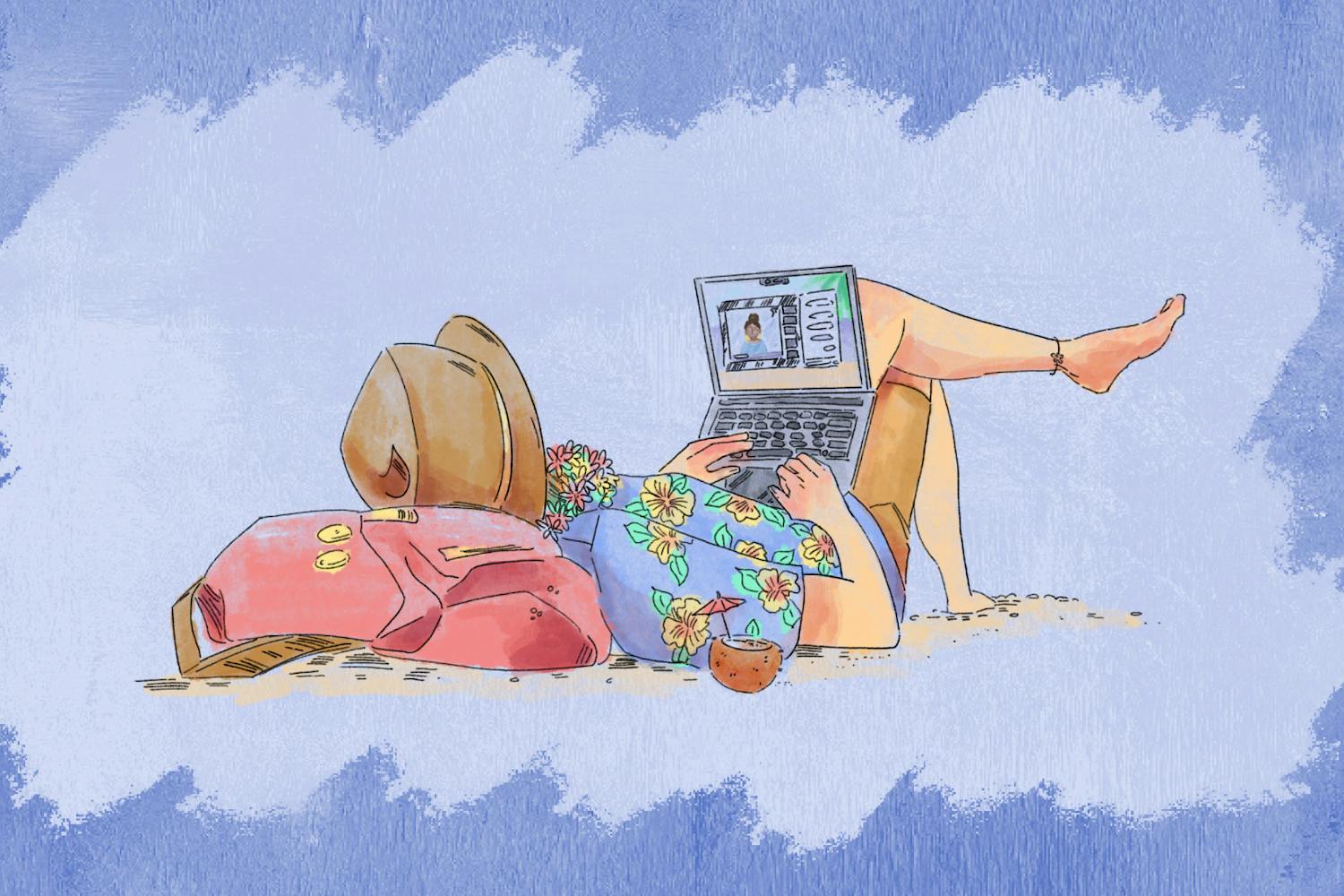University students are often intimately involved in many of the most important social movements of our day, providing critical assistance to fights against injustice everywhere, such as the recent protests of the gag rule on reproductive health or the outrage over the killing of Antonio Arce by Tempe PD. However, students should do more to remedy injustices done against the students and employees of Arizona State University.
What are these injustices? What can be done to combat them? Is there a way to combat these injustices without sacrificing the valuable activist work that students do every day on behalf of their communities?
The answer to the last question is yes. By organizing as workers and students of the University, we, as members of the ASU community, can leverage our positions to fight for our own interests and on behalf of the downtrodden and struggling in our society.
Students, too, are struggling. A 2013 survey by Citigroup, known most widely for its banking division, Citibank, found that approximately 80 percent of students in the US work at least part-time and primarily fund their education with their own money. This statistic may relate to some ASU students. Both graduate and undergraduate students hold jobs like cafeteria work, tutoring, research assistance, teaching assistance, programming and much more.
While the University claims that students who work part-time jobs perform better academically than other students, this only applies to students who work less than 20 hours per week. For students who work more than 20 hours per week, it appears the opposite is the case, according to a study conducted in 2008 by the Bureau of Labor Statistics. Currently, the University allows students to work up to 25 hours per week but only implemented that limit in 2013.
This is not taking into account the fact that, while many jobs may limit employees from being paid for more than 25 hours, fulfilling the duties of certain jobs may require more than 25 hours of actual work per week. The problem is that much of the work done in the age of the internet is done from home, which leads to work tasks bleeding into other areas of life. It was this problem that lead France to pass a law regulating the times which work emails can be sent to employees.
Students may be working for the University without pay because ASU does not allow them compensation for more than 25 hours. For example, a graduate student tasked with teaching classes is not going to stop working if preparing for their class takes longer than 25 hours every week. In addition, if student workers cannot get more hours, they may work other jobs elsewhere beyond the 25 hours; this encumbers students in a way that could be avoided should they be allowed to work more hours for the same employer.
Another problem that student workers face what should be criminally low pay. On Jan. 1, 2019, the minimum wage of the state of Arizona was raised to $11 per hour. However, the University is not required to pay state minimum wage; its payscale for waged employees starts at $10 an hour. While the minimum wage increased, it didn't affect stipends, which is how many student employees get paid.
Many ASU employees are exempt from the standard minimum wage, and ASU has been compensating students through stipends and other means in a manner that would land any other employer with sizable fines.
Many students receive stipend pay in order to cover expenses in exchange for labor that is ostensibly educational.
The rationale is that students receive extra money to cover their costs while receiving valuable training in jobs that would not be offered otherwise to non-students.
However, the stipend-pay system is ripe for exploitation because it ties student compensation to a specific task and not to the amount of work performed. That the positions may not otherwise be offered or that the positions are meant to provide training is immaterial because the purpose of having a minimum wage should be to ensure employees are fairly compensated for their work.
Students take on employment for primarily financial reasons, whether to support themselves now or to increase their chances of getting a job in the future. If students cannot afford to continue their studies without working more than 25 hours a week, then this should be seen as a sign that the cost of tuition, fees and housing needs to come down.
While it is true that workplace organizing may benefit all workers, some student workers face exceptional types of exploitation that call for redress. For example, ASU must be compelled to not only guarantee all student workers at least minimum wage, but also at least a living wage.
The cost of living in Tempe has ballooned in recent years, putting even more pressure on many students who live in or near the city. State Press Magazine has detailed some of the problems with affordable housing and gentrification in Tempe. Students under pressure from low wages, high university expenses and lack of affordable housing have also been exploited by unfair leasing practices by landlords.
Read More: Tempe: A history of gentrification & Is Tempe seeing a wave of gentrification?
Student workers and University employees face a wide array of challenges, but why is labor organizing the solution to these challenges?
Besides isolated cases of universities granting concessions on the basis of student actions, other evidence demonstrates the utility of labor organizing in improving conditions and pay on a long-term basis. A June 3, 2018 review by the Chronicle of Higher Education found that adjuncts represented by unions achieved gains in compensation, benefits and academic freedom.
Administrations often argue against unions in higher education on the grounds that unions would come between students and faculty to make crucial decisions on behalf of students. But the administration is not a neutral party, merely existing to ensure the education of students and the furthering of academic knowledge. It is itself an intermediary between the students and education, a bureaucracy assigned to perform a task on behalf of the state government, which is demonstrably no friend to students.
There are several examples of successful student organizing throughout the world that ASU students and employees could emulate. The importance of highlighting these models is not to argue that there is a specific way in which students and workers at ASU should organize, but to show the various ways this has been accomplished in the past amidst a variety of challenges.
For example, in 2012, in reaction to an announced tuition hike by the Quebec provincial government, Quebecois students conducted a six-month strike against classes, shutting down universities throughout the province.
The strike resulted in the repeal of the tuition hike and the election of a new government that was more sensitive to the needs of students and the poor. Quebecois student activists drew on a long tradition of student syndicalism, primarily originating in the 1960s, which sees students as future workers and works to achieve demands, such as free tuition through tactics such as student strikes and decentralized, direct-democratic unions.
Similarly, in 2017, cafeteria workers at UC Berkeley shut down a cafeteria on campus in a protest over unpaid wages. Even after being fired, cafeteria employees continued to protest on campus and eventually won their jobs back as well as wage concessions.
Students can also be a very powerful force in working to improve the lives of university employees. In 2006, students at the University of Miami flyered, marched, joined hunger strikes and occupied buildings in order to support efforts by janitors at the university to unionize, the end result of which was a success.
Many of the same tactics used in the struggle for the rights of university laborers can be used in other contexts as well, such as when students at UC Berkeley occupied a university building in protest of cuts to the multicultural center there.
Student organizations such as United Students Against Sweatshops have had success advocating for the rights of workers here at ASU and have joined with students from Students for a Democratic Society to advocate for a tuition freeze at the University.
As for ASU, because public university workers are public employees, they do have the right to collectively bargain, but it is unclear if they have the right to strike. Students could work to elect politicians who would support changes to these laws. However, the point of political organizing is not to be a spectator to political and institutional decision-making but, rather, to play an active part in it.
What this looks like in practical terms depends on the situation that faces us. ASU does not have a long history of labor organizing on campus, and students are notoriously politically inactive — although this seems to have changed somewhat in the past couple of years, with voter turnout among young people having much increased in 2018.
Students need to embrace forms of organizing and political participation that don’t rely on electoral politics alone and put agency for political and economic decision-making directly in the hands of students; that means leveraging the power that they have within higher education and the workplace in order to demand concessions and play an active part in decision-making, or, indeed, make their own decisions.
Whether this takes the form of strikes, protests, student syndicates, unionization, etc., students cannot wait on the caprice of politicians and the uncertainty of the political process in order to fight for their own futures.
The preceding examples of successful organizing demonstrate that students and University employees can gain, for themselves, an immense amount of power by organizing collectively; this power manifests as power over their employer, the University, as well as businesses, political parties and the government. While labor organizing is a potent tool for winning demands and achieving political goals, those goals can be as ambitious or narrow as those who set them want them to be.
The power that the administration holds over students that allows them to deny adequate wages is the same power that the administration uses to deny non-white students access to adequate resources. Students should use the power they have over the administration and the government in order to fight injustices against all students, and injustice everywhere.
Ultimately, labor organizing at ASU must adopt a commitment to an expanded conception of justice and freedom; one that both includes and goes beyond the immediate economic interests of students and University workers.
Labor power should be a vital tool in the hands of the students and employees of the University to reshape our community for the better.
Editor’s note: The opinions presented in this column are the author’s and do not imply any endorsement from The State Press or its editors. This article was originally published in print in State Press Magazine, vol. 19, issue 4 on Feb. 6, 2019.
Reach the reporter at bjcoope7@asu.edu and follow @bcoop_az on Twitter.
Like State Press Magazine on Facebook and follow @statepressmag on Twitter.




